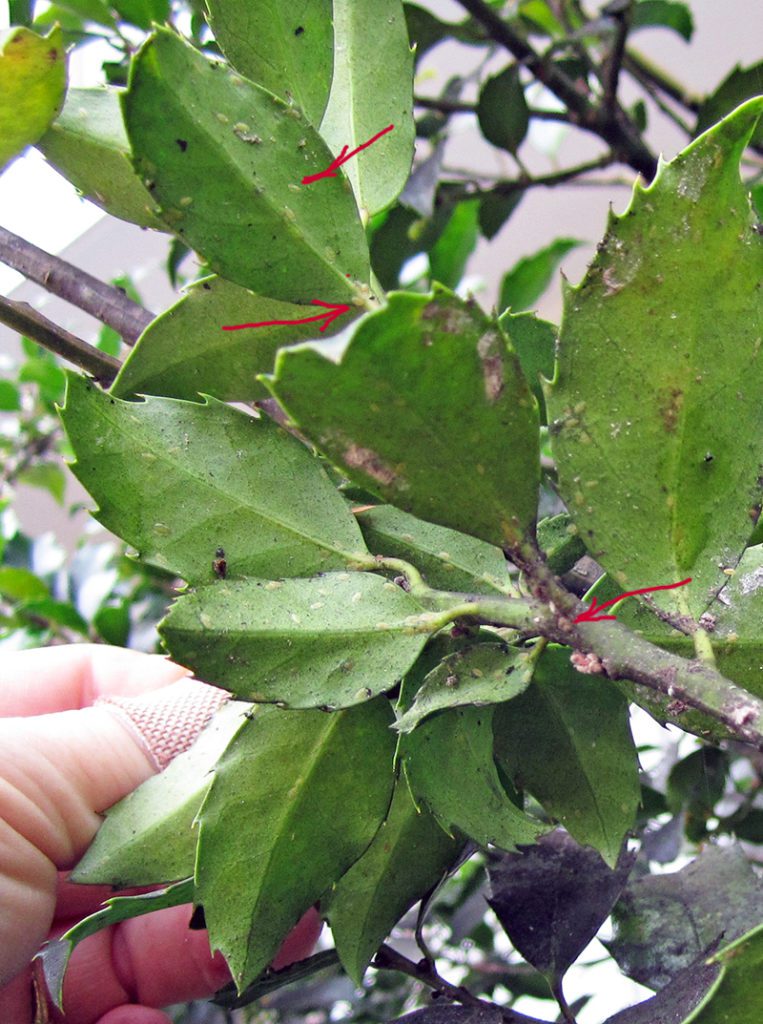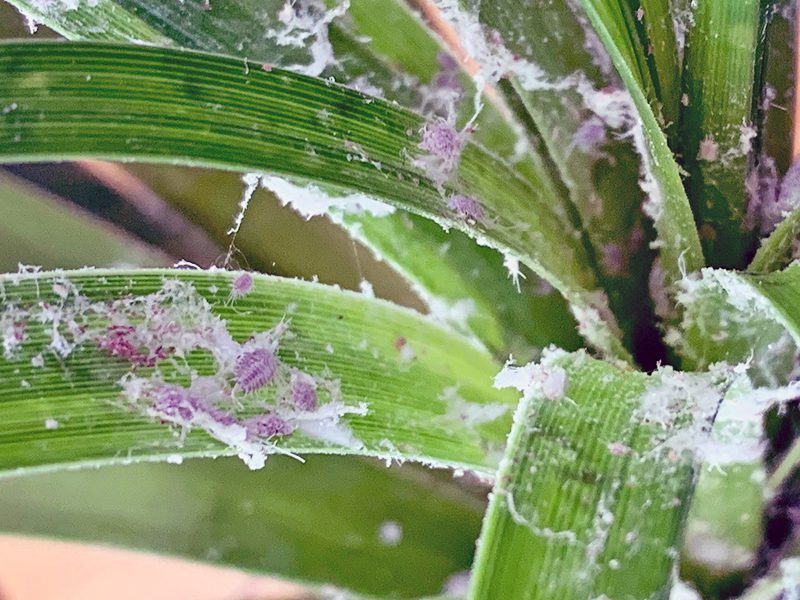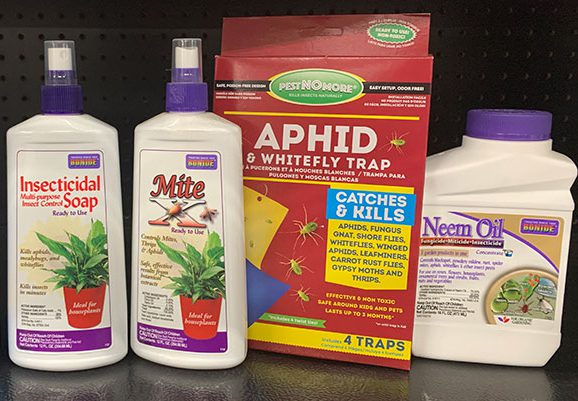How To Get Rid of Insects on Houseplants
How To Get Rid of Insects on Houseplants
This is the time of year when people suddenly notice that the area around their houseplants is sticky. Or they see tiny bugs or what looks like small bits of white cotton on their plants. Insect populations on houseplants often balloon in late winter, so it’s common to find larger populations of bugs on your plants in February and March. Here’s how to tell if you have an inset infestation on your indoor plants.
- Dusty, dirty looking, or leaves that have small bits of white debris on the tops or underside of the foliage. Sometimes this debris are the insects or mites themselves, and sometimes this is the litter left behind as they live and breed.
- Sticky plants, or tacky areas under the plants on tables or floors. This is “honeydew,” the plant juices that insects have secreted as they feed. It is high in sugar, which is why it’s sticky. Sticky plants are a sign of a sucking insect at work.
- Tiny tan bumps are usually scale. They can range from brown and hard to small and pale gold in color. Often scale is found on the stems or along veins of the leaves, but it can crawl anywhere on the plant.
- Small bits of white, fluffy stuff that looks like cotton. This is usually mealy bug. If what you see looks more like microscopic grains of white rice, that’s probably aphid litter.
- Tiny “fruit flies” that zip around your house in the rooms where you have plants. These are fungus gnats, and they breed in the soil. The gnat larvae eat organic matter such as roots and bark in the soil mix.
- Dusty or dirty undersides of leaves with no visible insects is often a sign of spider mites. Citrus trees often get citrus mites indoors, and ivy plants are prone to spider mites.




When treating insect problems it’s important to know what you’re dealing with. If you have mites, you’ll want a miteside such as Mite X (center in photo above). Insecticidal soap, neem oil or the Espoma Organic Insect control are good for other insects, and the yellow whitefly traps help control aphids, whitefly and fungus gnats. For fungus gnats it can also be effective to use spinosad (Captain Jack’s) in the water as this kills the larvae in the soil.
Use any of the products according to direction. Note that you’ll need to repeat the application of any insecticide or miteside every week to ten days for at least a month in order to kill off successive generations as they hatch.
If you have scale it’s helpful to wipe off any of the crawlers that you can with a terrycloth towel or washcloth that has some insecticidal soap on it. Use this to gently remove what scale you can, and then treat the plant with the insecticide of your choice.
Be sure that any houseplant with an infestation isn’t stressed or over-fertilized. Fertilizer pushes more new growth that is very tasty to insects, so it’s usually best to wait until your pest problem is under control before fertilizing the plants. Don’t over or under water, as this can be stressful for plants.
If your house has very dry air, consider raising the humidity with a humidifier during the winter months. Also, insects thrive in warmer room temperatures, so setting thermostats down into the 60 to 65 range in rooms with pest-prone plants can often be helpful.
Finally, if your plants can easily be moved into a shower or kitchen sink, washing them off with a spray of room-temperature water can be another way to control insects. Wiping shiny leaves (as opposed to fuzzy, African violet foliage) with a cloth soaked with insecticidal soap is also effective.
If you have an insect problem you can’t identify, put a sample of the houseplant foliage in a zip-lock bag and bring it into our store on West Main Street, Hyannis, for identification and treatment options.
Subscribe To Our Newsletter
Sign up for our weekly email about sales and events.
